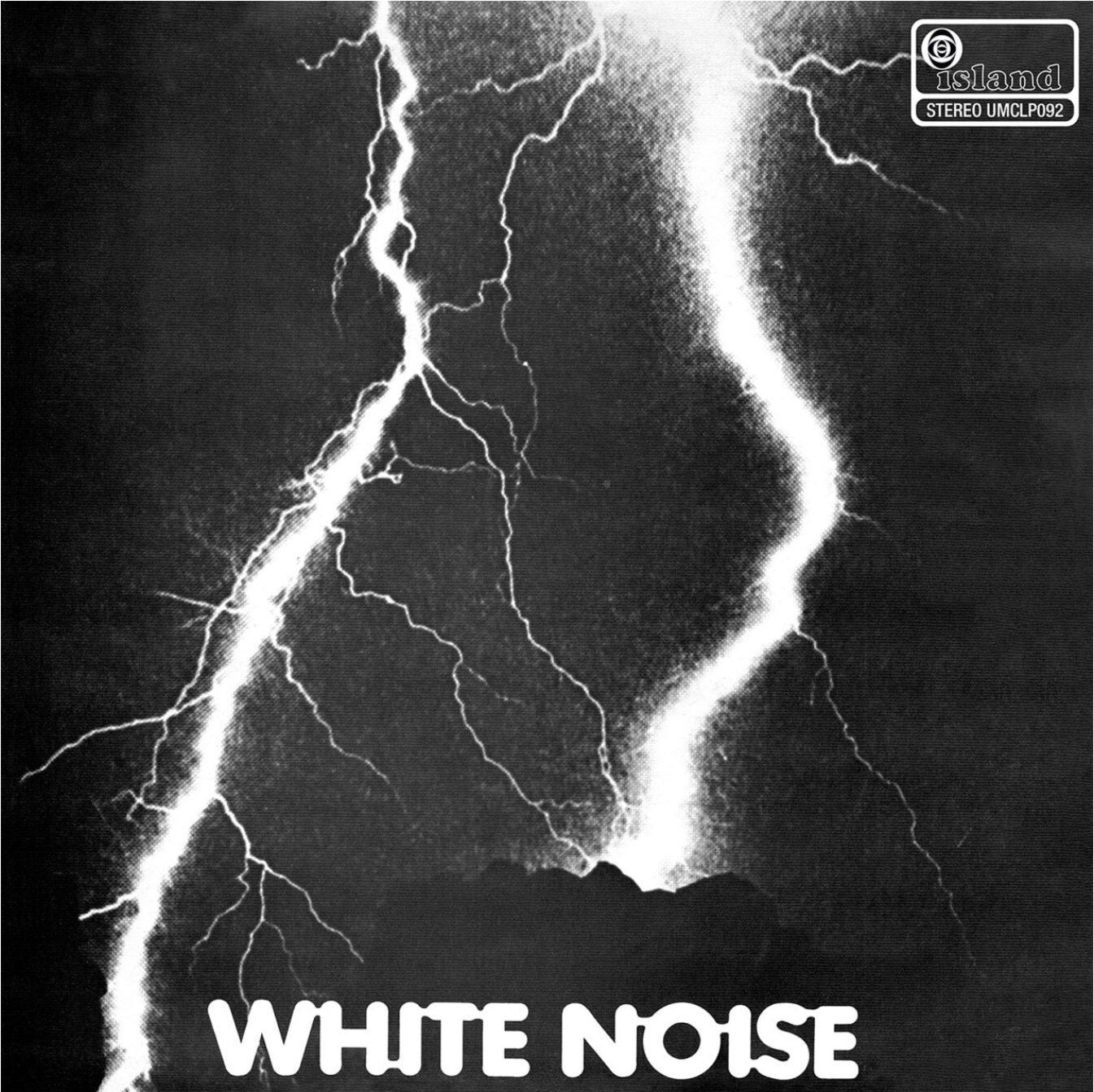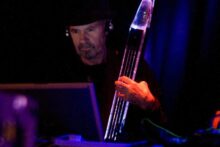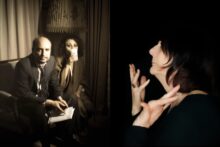The paintings of Maxim Vorobiev are largely forgotten. The glow of his arcadian land and seascapes feels kitsch now, lacking the untamed strangeness that make Aivazovsky or Turner still commanding. There is, however, one exception. In 1842, having lost his wife, Vorobiev painted Oak Fractured By Lightning, as staggering an articulation of the raw wounding of grief as you’ll ever see. Here’s mortality as an elemental force, totalitarian and capricious in its devastation. It’s not simply the agony and impact that reaches us. It’s the feeling of confusion at the abrupt annihilation of something, someone, we’d grown to feel was permanent. For all of civilisation, we’re left like cave people bereft and terrified of an unknowable sky. Humans made gods out of lightning, to comfort themselves that there was logic or motive that could be learned, a code to be cracked, adapting their behaviours to appease a notional bolt-hurling sky-dweller. Though we’ve understood what lightning is, since the days of Benjamin Franklin “drawing Electric Fire from Clouds” with his kites, it still retains a power beyond the exactly rational. Storms feel just as portentous as they did when Shakespeare had his Weird Sisters discuss “When shall we three meet again? In thunder, lightning, or in rain?” To tap into such forces still feels Promethean because we do not know what they, and we, are truly capable of.
For centuries, music was organic. Wood was carved, brass was hammered and bent, animal hides were stretched over drums. The arrival of electronics was a rupture. At first, they were dismissed as novelties – the 18th century clavecin électrique, for example, which produced sparks while playing or the Denis d’or that gave its players electric shocks. It took a long while for the view that theremins, mellotrons and so on were gimmicks to ebb away, being employed for schlocky sci-fi b-movies and variety acts. Gradually the influence of musique concrète, Stockhausen, Varèse, Cage, Xenakis and co., seeped through the critical and popular culture aided by LSD, The Beatles, film soundtracks and so on. It was only really in the late ‘70s that a degree of democratisation came when synths no longer had to be the size of a wall (like the Telharmonium) or cost a small fortune, and albums like Phaedra, Autobahn, and The Pleasure Principle had shown what was possible.
Though there was once disdain for working in such a field (the experimental composer-inventor Ivor Darreg was disowned by his family, for instance), the taboo reflected deeper anxieties about electricity itself, the harnessing of the power of the gods. A popular cartoon in 1889 took understandable concern about the safety of electricity, pseudo-scientific fears that had existed since, at the very least, the death of Georg Wilhelm Richmann in a lightning experiment, and blew them up into a hysterical depiction of ‘The Unrestrained Demon’, causing death and destruction on a city street. This ominous strand threads through the development of electronic music; the feeling that something had been stolen from celestial or infernal origins and there’d be consequences. The technocratic and hedonistic sides of electronic music are well-documented. The shadow side less so. The ondes Martenot being inspired by radio communications during the First World War. Leon Theremin ending up in the Gulag. While the Second World War is raging, Halim El-Dabh is out on the Cairo streets recording, and manipulating, exorcisms for the eerie and innovative electronic composition, ‘The Expression Of Zaar’ or ‘Wire Recorder Piece’. Around the same time, in Germany, the electronic instruments invented by Jörg Mager – Sphärophon, Kaleidophon, Partiturophon – were being obliterated in Allied bombing raids.
All of which is, of course, confirmation bias. You find what you’re already drawn to. This association between electronic music and the morbid is not entirely without substance – the menace of pulse and drone lends itself expertly to horror soundtracks as John Carpenter’s existence demonstrates beautifully. It was instilled early though by the first piece of electronic music I ever heard and loved – the Doctor Who theme tune. As terrifying as the Daleks and Cybermen were for an infant, there was nothing in the otherwise charming show that really matched the impossible voyages that music unleashed in the fathomless mind of a child. It was utterly alien. Music that I was palpably afraid of. I still cannot hear it with a shiver. It was a gateway drug to all the electronic music that followed and all the nocturnal years of being a basement club goblin. Delia Derbyshire was to blame, the genius who’d transformed Ron Grainer’s tune so much he scarcely recognised it. Some soundtracks, especially television, act like a demarcation line or a gateway, separating a self-contained universe from the dire programme listings before and after. Other soundtracks are like an extra character, human or inhuman, hanging like an unearthly mist or stalking protagonists and audience alike– Taxi Driver, Jaws, the ‘Man With A Harmonica’ in Once Upon A Time In The West. The Doctor Who theme tune manages both.
In the summer of 1969, a most unusual album was released. The cover of White Noise’s An Electric Storm makes it look like an early heavy metal record. The mainstream view of this time is that this was the comedown, the collapse of hippy utopianism, with artists burned out from acid, shellshocked back into reality by Manson’s murderers and the horror at the Altamont Speedway. Music would veer back towards rootsy ‘authenticity’ and canyon/coke-bound singer-songwriters. History is written not by the victors, evidently, but by squares. For this was the year of Stonewall and the ‘Black Woodstock’ in Harlem, the year of Trout Mask Replica, In The Court Of The Crimson King, Caetano Veloso, Karma, Stand!, Monster Movie, In A Silent Way, Mutantes, Moondog… an immensely fertile time of new weirdnesses, where nothing sounded the same, and thus a time not respected or recognised enough by those who thrive on categorisation. An Electric Storm seems, then, an outlier but also perfectly divergent for the times, and if the participants’ superficially buttoned-up BBC-ness seems incongruous in the age of Can or Sly and the Family Stone, it remains incredibly influential – the BBC Radiophonic Workshop being an endless mother lode for hauntological projects like Ghost Box.
Much of the appeal of this cult record, now rereleased by Proper Records, in collaboration with Universal, is its obscurity. There’s a critical inflation that crate-digging can lead to. You find an obscure album or track and its rarity makes you lose all sense of proportion. This can lead to grand claims and disappointment. An Electric Storm is a genuine find, though. Recorded in a Camden flat, repurposed as the Kaleidophon Studio, all the tracks were collaborations guided by David Vorhaus’ songwriting, with vocals by John Whitman, Annie Bird and Val Shaw. The electronics realised by Delia Derbyshire and Biran Hodgson, are surprisingly integrated into a suite of songs, initially at least. The sides are named ‘Phase In’ and ‘Phase Out’ but generally the feel is more childlike whimsy than futurism. If we imagine a spectrum between Day-Glo bubblegum pop and lost-in-the-wild-woods-and-never coming-back psychedelia (Syd Barrett’s ‘Bike’, Bowie’s ‘Bewley Brothers’ etc), An Electric Storm is somewhere in the middle. There are moments of undoubted unease juxtaposed with the bijou quality of early Belle and Sebastian. The opening track, ‘Love Without Sound’, is a fine example. The album was commissioned by Chris Blackwell on the basis of the track and there are hints of far-flung music to come throughout. The echo-saturated beginning threatens to take off in the way of, say, Caribou’s ‘Sun’, before settling into the sort of bubbling dub soup The Orb might cook up. The most compelling aspect of the song is the wavering balance between softly sung ballad and the disconcerting voices heard throughout, as if teetering above the chasm of a bad trip.
‘My Game Of Loving’ has a similarly peculiar mix of the twee and the bacchanalian. Musically, it moves all over the map, alighting for brief moments on baroque chamber pop with touches of Love and B&S, post-Smile Beach Boys weirdness, Gainsbourg-Stereolab cool, Yes-style pageantry. Given it’s 1969, and the year of ‘Je t’aime… moi non plus’, there’s naturally what sounds like the field recording of an orgy in the middle, which is reprised in a slightly more BDSM form at the song’s climax (it finishes with the sound of snoring). There’s even a Gainsbourg-esque cynicism to the lyrics, “When I smile at you or touch your hand / Do not think I love you, I’m just playing.” Like the album as a whole, it sounds like countless records in your collection and like no other. On the sleeve they announced, ‘MANY SOUNDS HAVE NEVER BEEN HEARD BY HUMANS: SOME SOUND WAVES YOU DON’T HEAR – BUT THEY REACH YOU.’ Remarkably, this was not untrue.
Beginning with cartoonish insect sound effects, ‘Here Come The Fleas’ belongs to a subgenre of off-Broadway (or rather beneath Broadway) show tunes, not unlike those that served as codas to albums by Lou Reed, the Velvets and so on. The experimental interlude mid-song begins like a nervous breakdown brought to you by Hanna-Barbera and then proceeds to descend into gritty 70s NYC psychodrama with people banging on the walls and yelling. Again, there’s so much going on that, in order to maintain a grip on the album, you reach for comparisons (the mischief and mania of the speeded-up parts seems to pre-empt avant garde/Looney Tunes-era Mr Bungle). It takes a lot of guile to disintegrate this convincingly.
The harmonious ‘Firebird’ follows, a harbinger of the heyday of indie experimentalism and lo-fi tape recordings truly beginning a decade away, followed by the mock-epic ‘The Visitation’ that begins ‘Phase Out’. It’s the final song though, a soundtrack for an unmade horror movie, ‘Black Mass: An Electric Storm In Hell’ that is the true epic of the album. Though it owes a debt to Pink Floyd’s recent Saucerful Of Secrets title track, with discordant comets of noise and cathedral-scapes held together with drum loops, it’s still a unique shock to the system. Satanic chants. Whiplash phasing. Screams rendered so it’s impossible to tell where the human ends and the machine begins. Swirling vortexes of torture. Splendid stuff.
“Whom the gods would destroy, they first make mad” the old phrase goes. Whom the establishment would destroy, they first make a national treasure. While the resurgence of interest in Delia Derbyshire and the BBC Radiophonic Workshop is not unwelcome, the canonisation is not. White Noise’s An Electric Storm is a mercurial and inventive reminder that the past is not the cosy settled history we might be tempted to believe. It took another brilliant maverick, Cosey Fanni Tutti, to truly see the troubled working class hero Derbyshire, celebrating her impropriety (‘oscillating like a sine wave’), working against technological obstacles and idiotically wasteful strictures (she was reputedly turned down from producing for Decca because she was a woman), and, despite it all, creating absolute fucking wonders. An Electric Storm was a collective creation though. And all of the figures – Derbyshire, Vorhaus, Hodgson and their cast of collaborators – intrigue because this album can be found in the DNA of so many others but remains intrinsically other. It seems inspired not by persistent myths of lone and beleagured pioneers and divine inspiration striking from on-high (the heavens appear to be empty, after all) but by the simple gathering of a group of curious individuals in a room together and the determination to push technology, taste and limitations beyond what was previously thought possible. Therein lies the real source of electricity.





